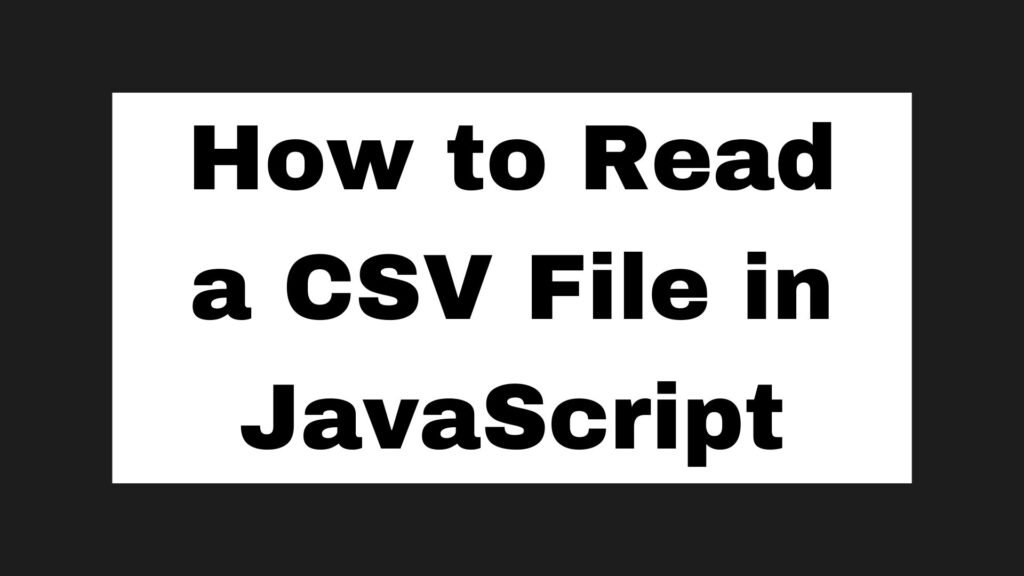
Reading CSV files in JavaScript can be accomplished using various methods and libraries. This guide will show you different approaches to read and process CSV files in JavaScript.
// Include PapaParse library
<script src="https://cdnjs.cloudflare.com/ajax/libs/PapaParse/5.3.0/papaparse.min.js"></script>
fetch('path/to/your/file.csv')
.then(response => response.text())
.then(csv => {
Papa.parse(csv, {
complete: function(results) {
console.log(results.data);
}
});
});
To read a CSV file in JavaScript, use the Fetch API to load the file and then process it with the PapaParse library:
Methods on How to Read a CSV File in JavaScript
CSV (Comma-Separated Values) files are commonly used for storing tabular data. In JavaScript, reading CSV files can be useful for data analysis, visualization, and other applications. This guide will explore several methods for reading CSV files in JavaScript, including using the Fetch API, the PapaParse library, and D3.js.
Using the Fetch API
The Fetch API allows you to make network requests similar to XMLHttpRequest. It is commonly used to load resources like CSV files.
fetch('path/to/your/file.csv')
.then(response => response.text())
.then(data => {
console.log(data);
});
Using PapaParse Library
PapaParse is a powerful library for parsing CSV files in JavaScript. It can handle large files, streaming, and various delimiters.
Example: Reading CSV with PapaParse
- Include the PapaParse library in your HTML:
<script src="https://cdnjs.cloudflare.com/ajax/libs/PapaParse/5.3.0/papaparse.min.js"></script>
- Use PapaParse to parse the CSV data:
fetch('path/to/your/file.csv')
.then(response => response.text())
.then(csv => {
Papa.parse(csv, {
complete: function(results) {
console.log(results.data);
}
});
});
Reading CSV from File Input
You can also read CSV files selected by the user through a file input element.
Example: File Input Method
<input type="file" id="fileInput" />
<script>
document.getElementById('fileInput').addEventListener('change', function(event) {
var file = event.target.files[0];
var reader = new FileReader();
reader.onload = function(event) {
var csv = event.target.result;
Papa.parse(csv, {
complete: function(results) {
console.log(results.data);
}
});
};
reader.readAsText(file);
});
</script>
Using D3.js Library
D3.js is a powerful library for data visualization and can also be used to read and parse CSV files.
Example: Reading CSV with D3.js
- Include the D3.js library in your HTML:
<script src="https://d3js.org/d3.v7.min.js"></script>
- Use D3.js to read and parse the CSV file:
d3.csv('path/to/your/file.csv').then(function(data) {
console.log(data);
});
Conclusion
Reading CSV files in JavaScript can be done using various methods and libraries. The Fetch API provides a basic way to load files, while libraries like PapaParse and D3.js offer more advanced features for parsing and handling CSV data. By understanding these methods, you can choose the most appropriate approach for your project and effectively work with CSV files in JavaScript.


